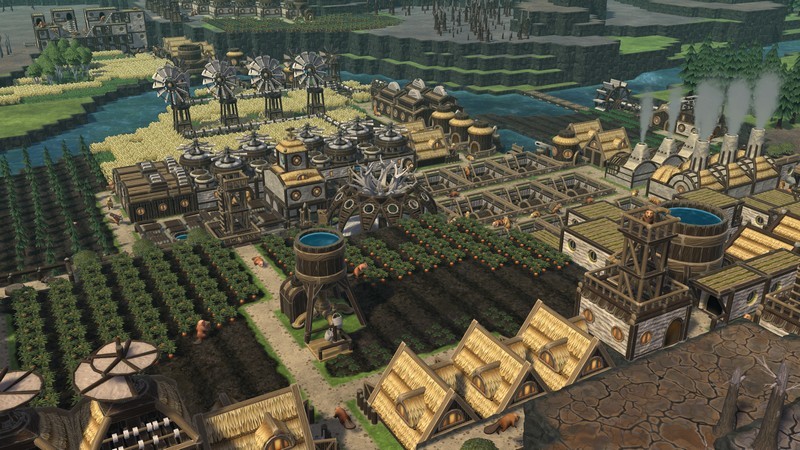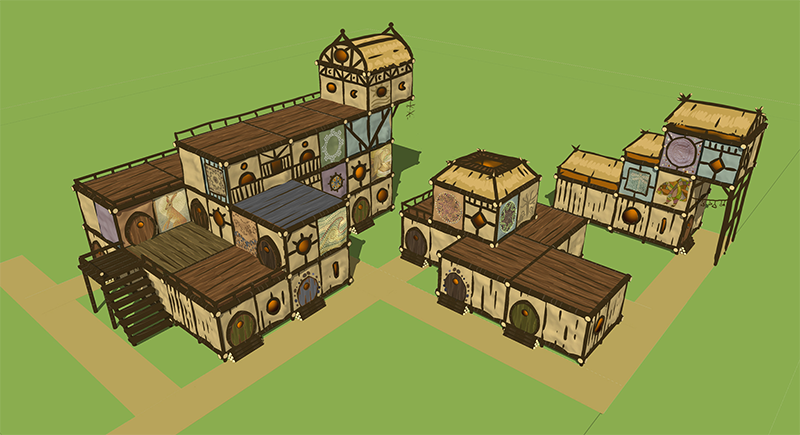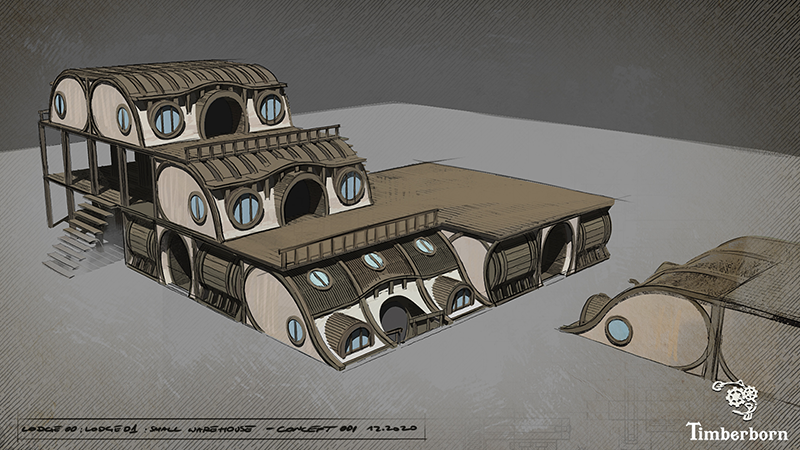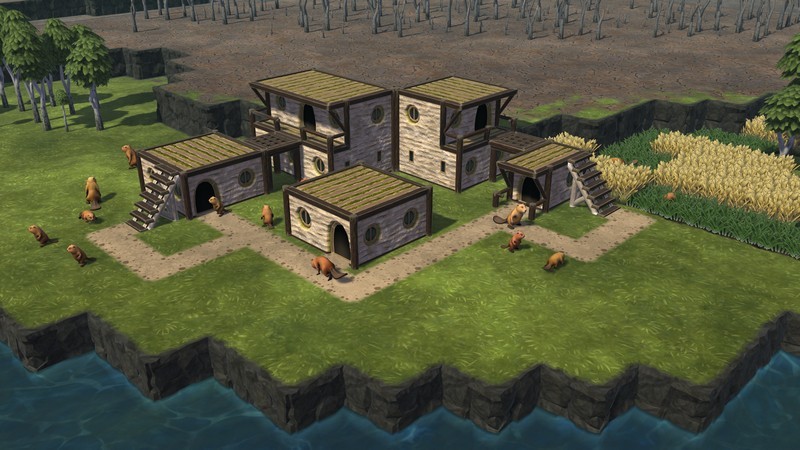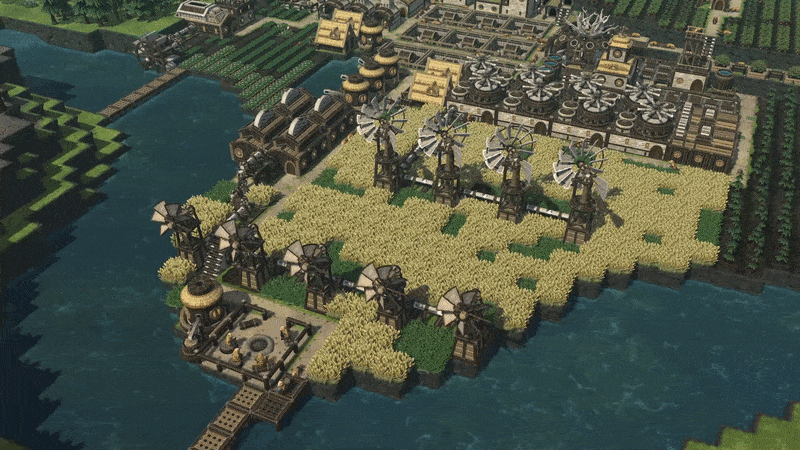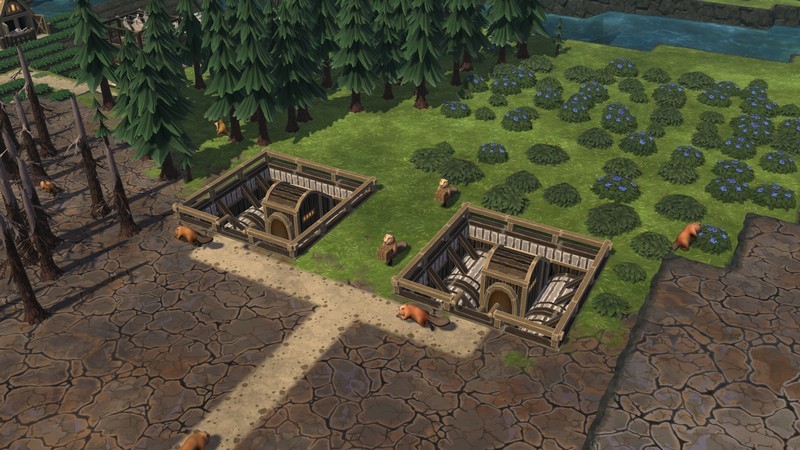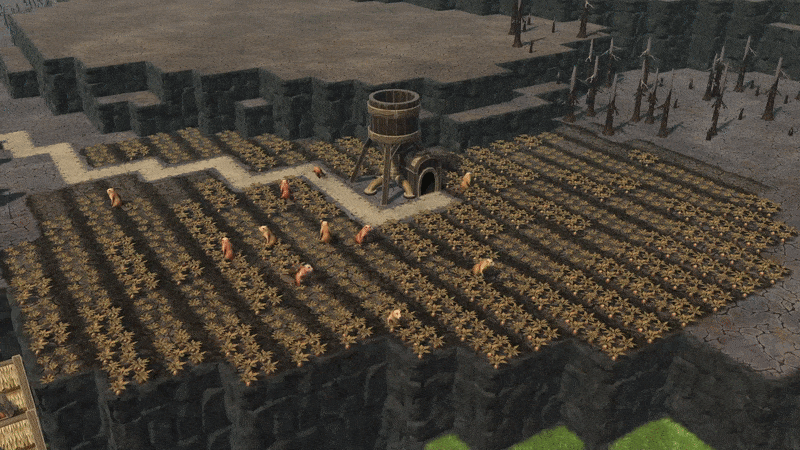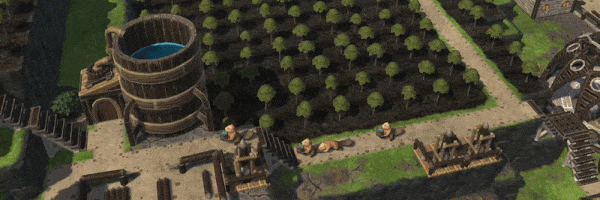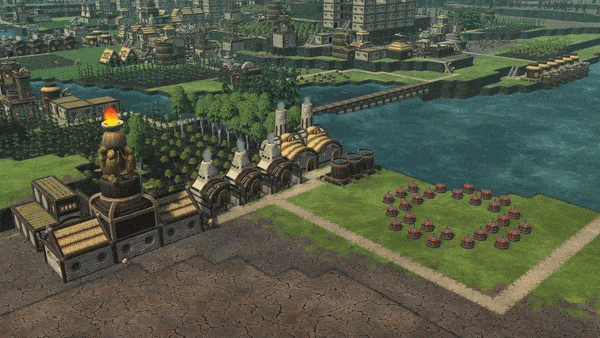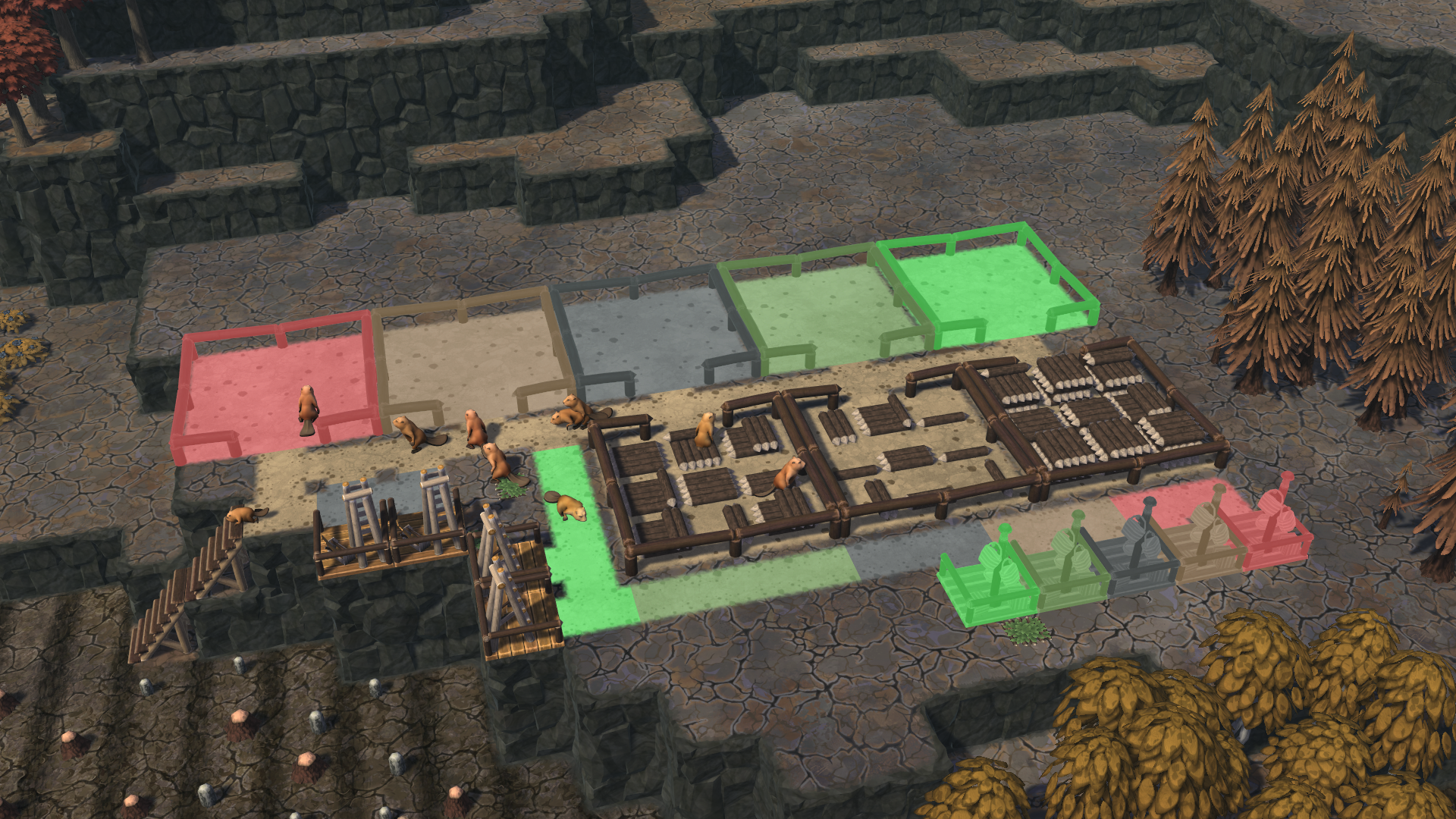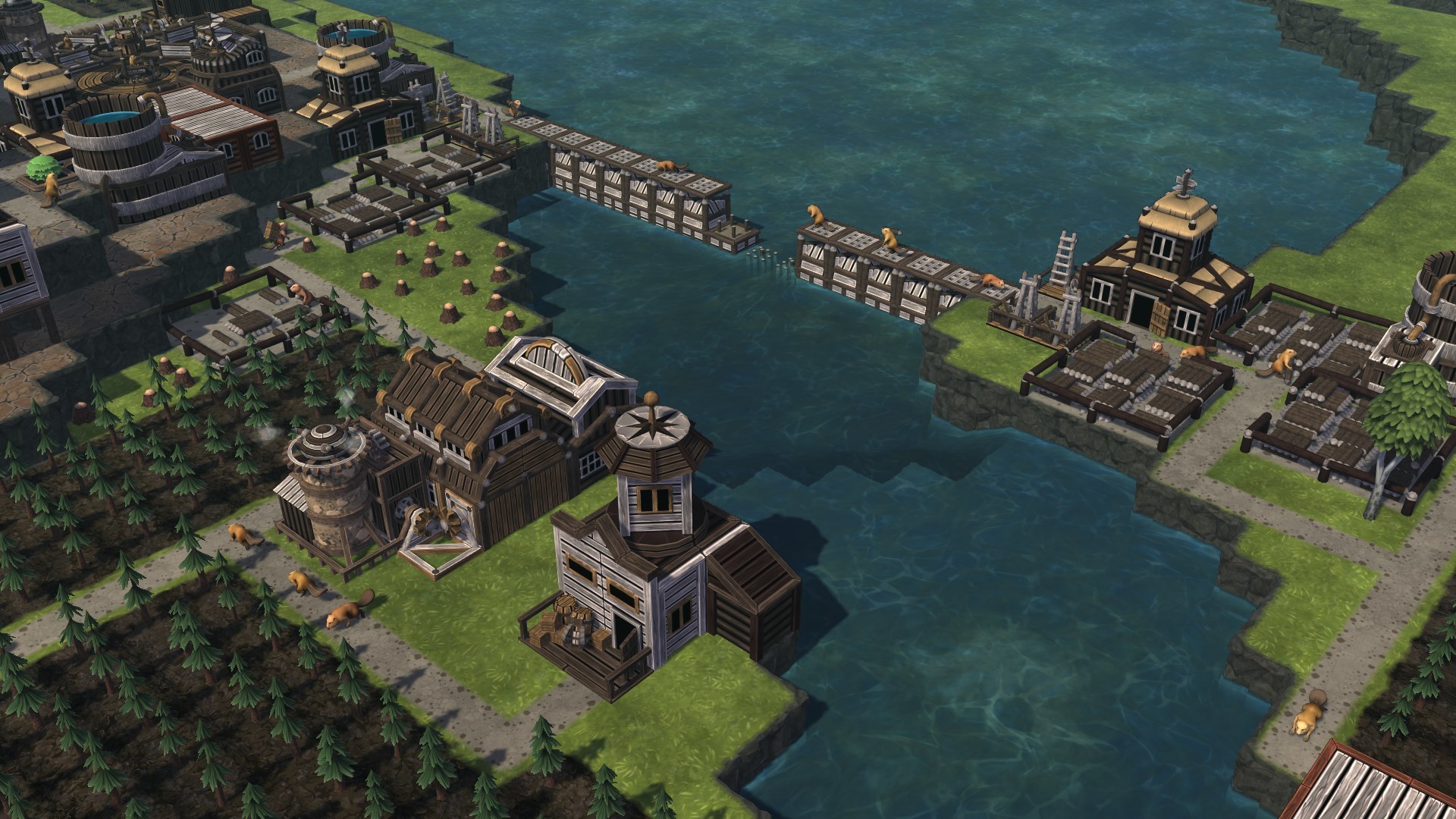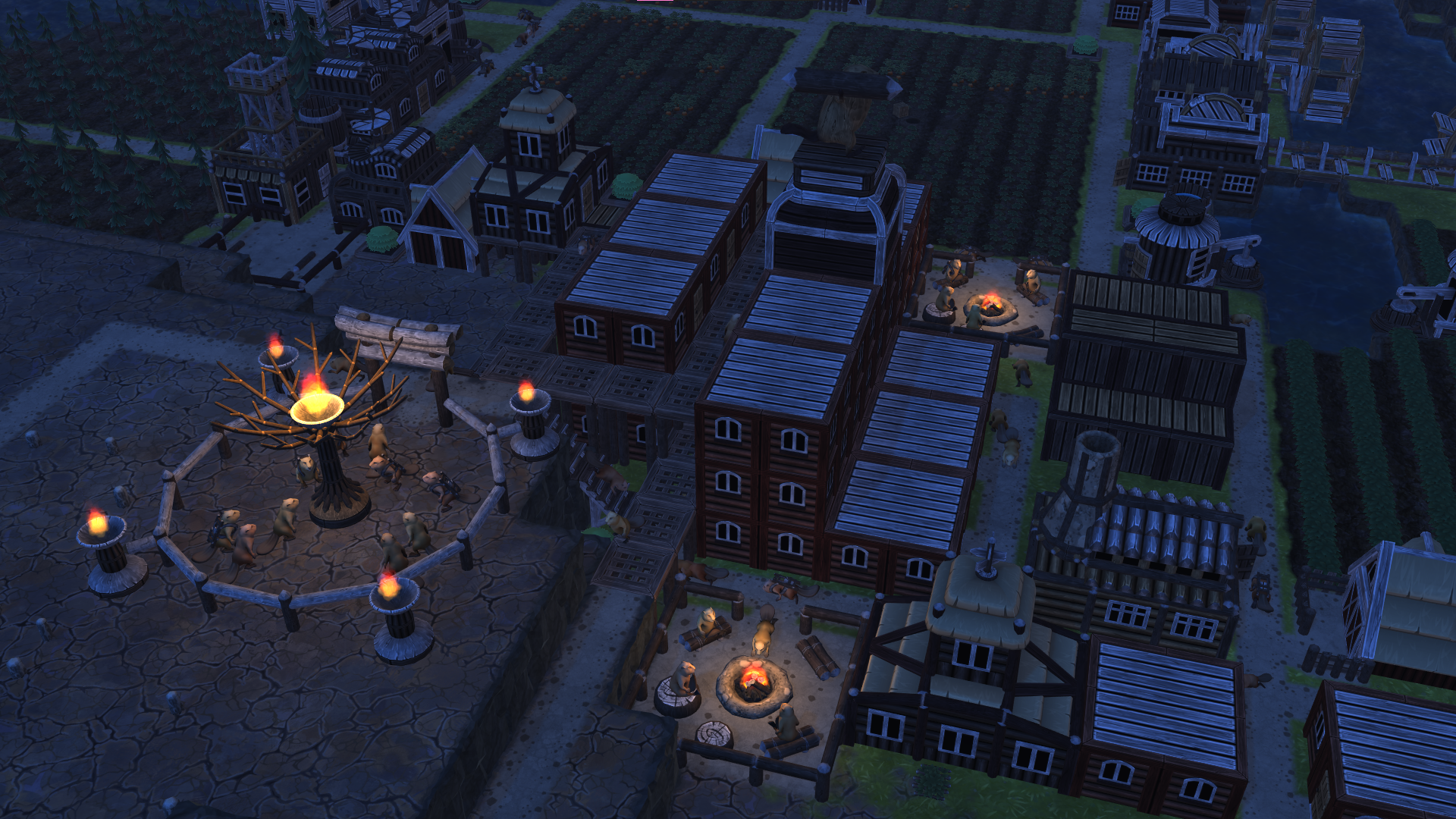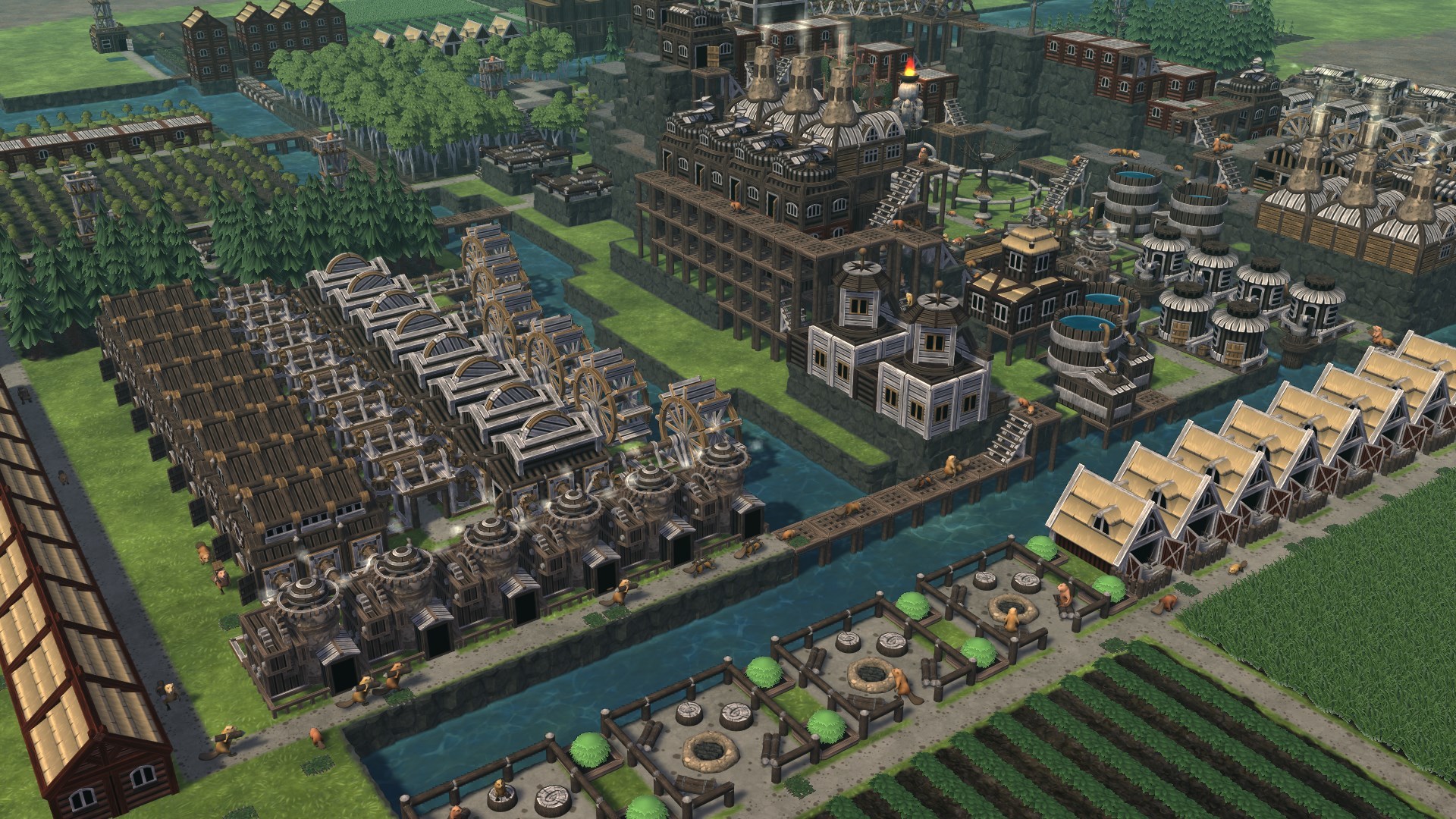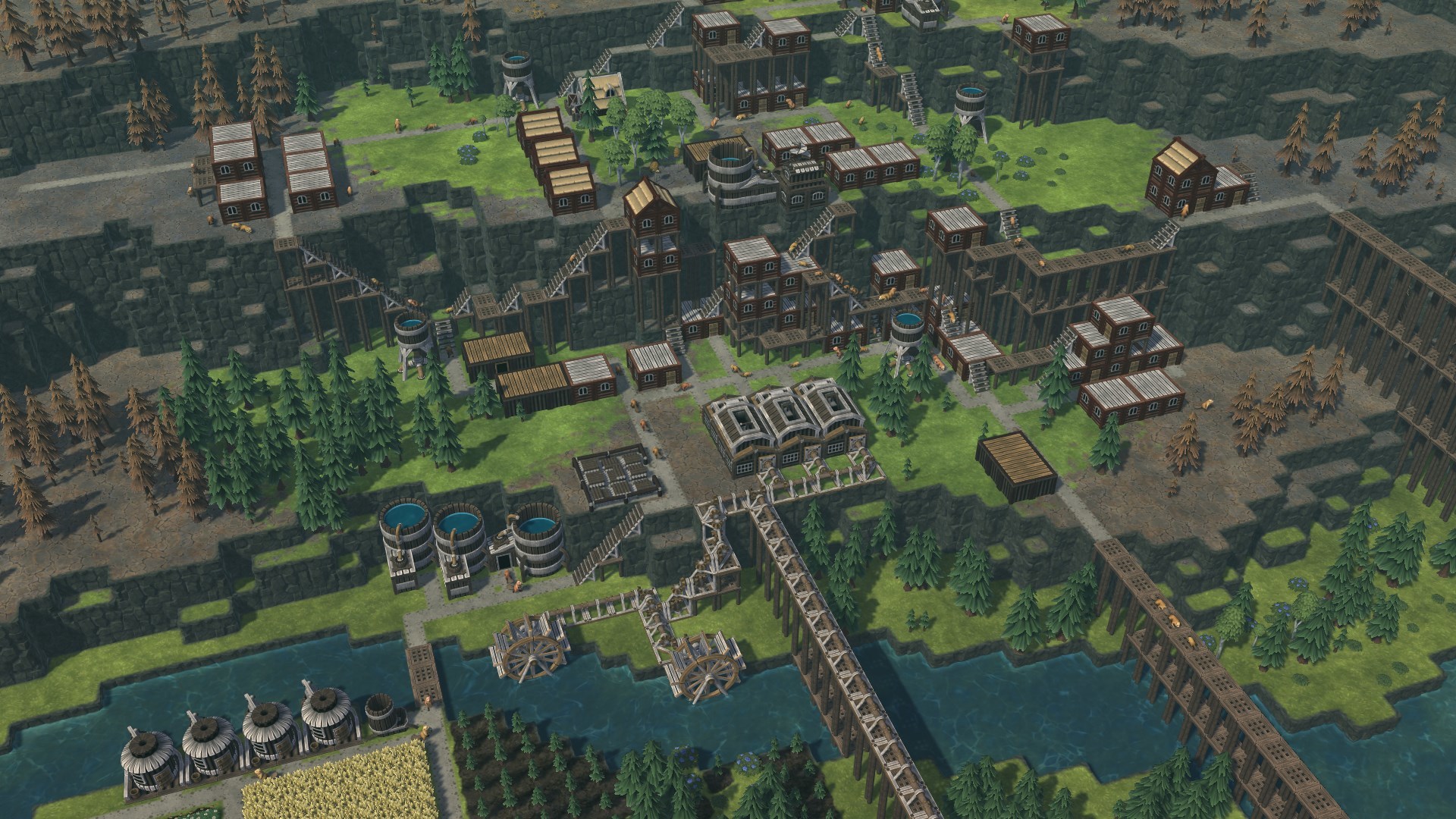
Jul 14, 2021
Timberborn - Miami_Mechanistry
Hi everyone!
Time to announce the next big thing coming with the early access launch of Timberborn: the district system. Districts make growing your settlements easier to understand at the beginning and more fun later. They also improve the game’s performance. Oh, and they give your beavers a chance to swim. What is this sorcery, you ask? Keep on reading because there's a lot to unpack.
The old system was quite simple but often left players confused. For example, if you wanted to build something with logs, the construction site needed to be in the range of both Builder's Hut and Log Pile. Also, some beavers would remain unemployed even though there were jobs available, as they lived too far away. These issues made the beavers less productive in the long run, and the districts fix that.
Add in some awkward situations where beavers starve with a full warehouse nearby or work in areas too far from their favourite carousel, and you get a picture. But that's in the past now!
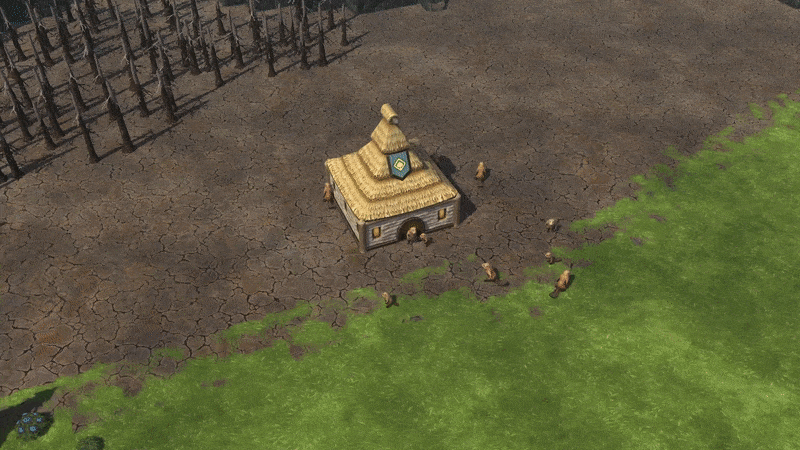
In Early Access, you begin with a single, new building: District Center. It replaces the batch of starting buildings you know from the demo. All future buildings that have entrances need to be connected to a Center via paths – or just won’t work. That also means that you now need paths on roofs, dams, or platforms. Because of that, placing paths is now instant and no longer needs workers. Also, paths now work underwater. What?! Okay, okay, we’re getting there.
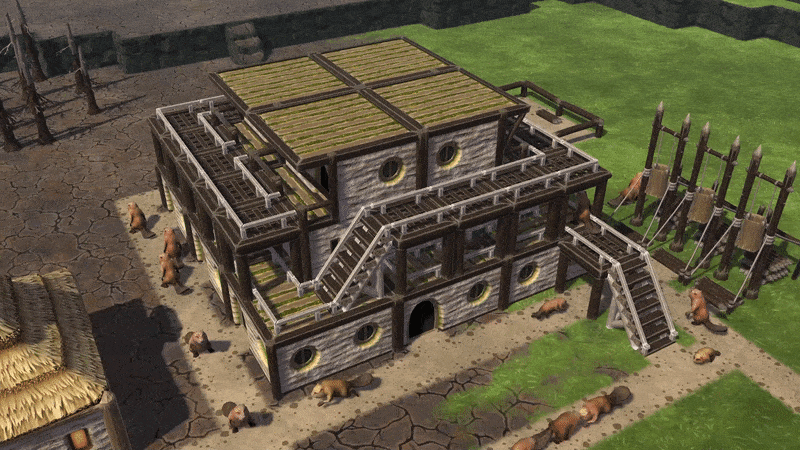
Under the new system, beavers diligently follow the paths you’ve built, moving between their homes, workplaces, attractions etc. but there are exceptions. Beavers who enjoy fieldwork such as cutting trees or working in ruins continue to do that within range of their workplaces. Builders construct buildings within the district. The district expands as you add paths.
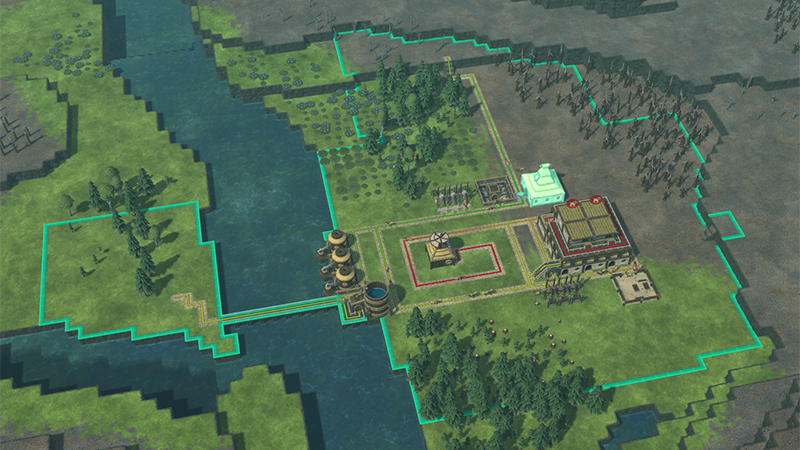
To set up a new district, you put a (free) micro building called Gate anywhere on a path, effectively setting up a district’s border. Then, you put a new (also free) District Center somewhere behind that gate.
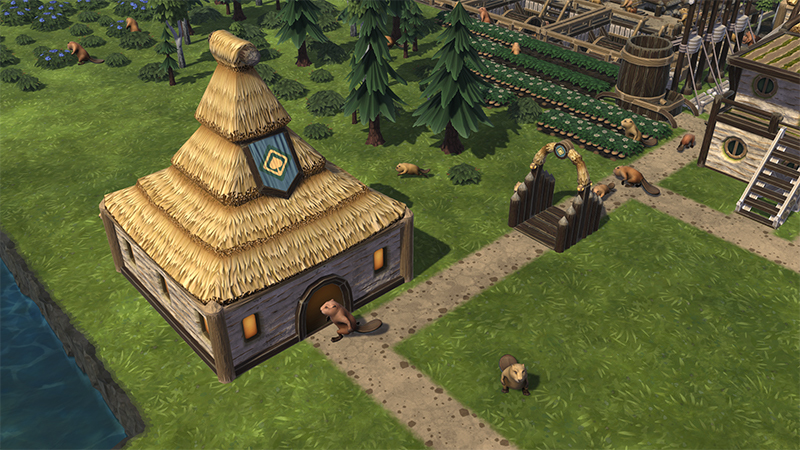
Your initial District Center comes prefilled with starting resources and all District Centers also employ a few builders. As there's no starting warehouse now, we’ve made adjustments to some other buildings such as Lumberjack Flag or Gatherer Flag that now have some storage capacity.
A new district could also use some resources, and that's where trading routes come in. You establish them using two new types of buildings: Distribution Centers and Drop-off Points. Distribution Center in District A allows you to choose a Drop-off Point in District B and which goods (e.g. Carrots or Flour) to ship there. Beavers from the Center will then pick up the selected goods from a warehouse and start moving them. You can set per-district minimums and maximums to control import and export.
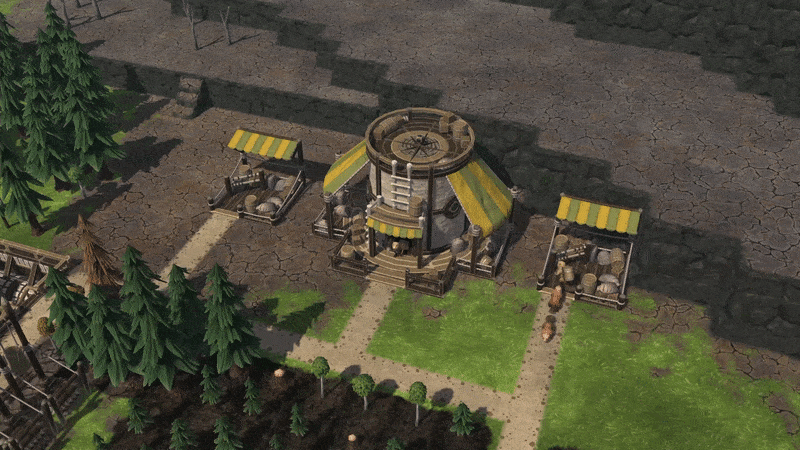
On that note, you can now switch between Global and District views. In the Global view, you see total numbers for your population, goods, wellbeing etc. The District view – opened via a list or by selecting a building – displays values for the district only. This allows you to create specialized districts, helps running large cities, and adds another layer to the game in the form of transporting goods.
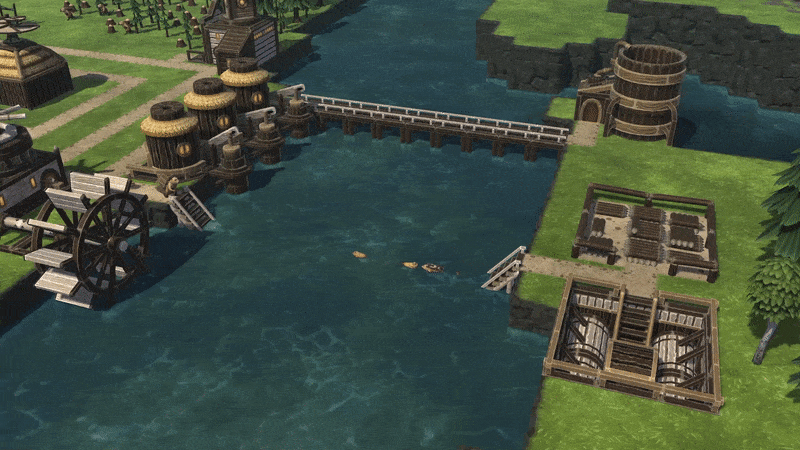
In Early Access, when you place a path (on the ground or, as described above, on platforms, rooftops etc.) and it ends up underwater, it remains usable. In shallow waters, beavers are swimming on the surface. If the water is deeper, they dive. Flooding a building disables it and swimming is rather slow, so you will generally still want to build above water. But beavers are no longer afraid to get wet and they go about their day (carrying goods etc.) even when it involves swimming.
And YES, you can build underwater if you wish. There’s now even an additional toggle that makes the water transparent so you can see what your rodents are up to in the depths.
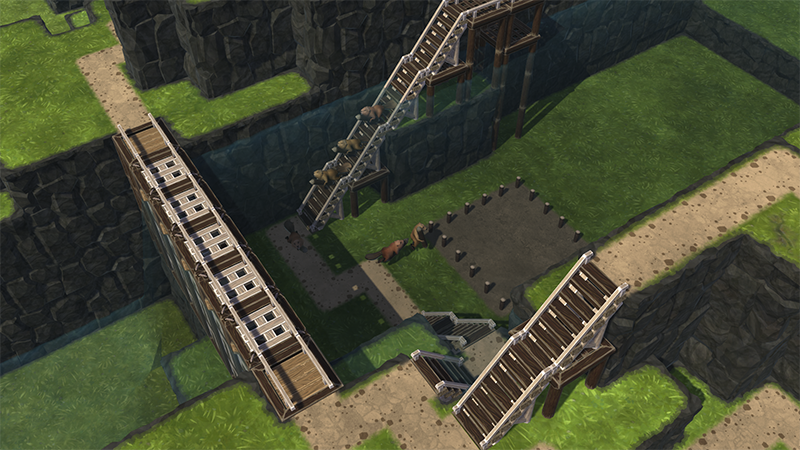
With districts, obligatory paths and swimming, beavers have a much easier time navigating the settlement. They do not need to recalculate their routes all the time as water levels change or you put new buildings in their way. And since they now operate within districts and only follow paths (not all the terrain), less data is stored and processed. For example, a hungry beaver’s algorithm works faster when it simply needs to check if there’s food in the district’s warehouses or not – and then has less ground to cover, establishing an optimal, non-exhausting way there.
Finally, to help you use districts and the now-omnipresent paths, we’re adding a feature desired by all vertical architecture enthusiasts. You will be able to view your settlements layer by layer. This helps you create complicated multi-level megastructures, maintain hidden buildings, or check for missed unconnected paths. It works great paired with the water transparency toggle.
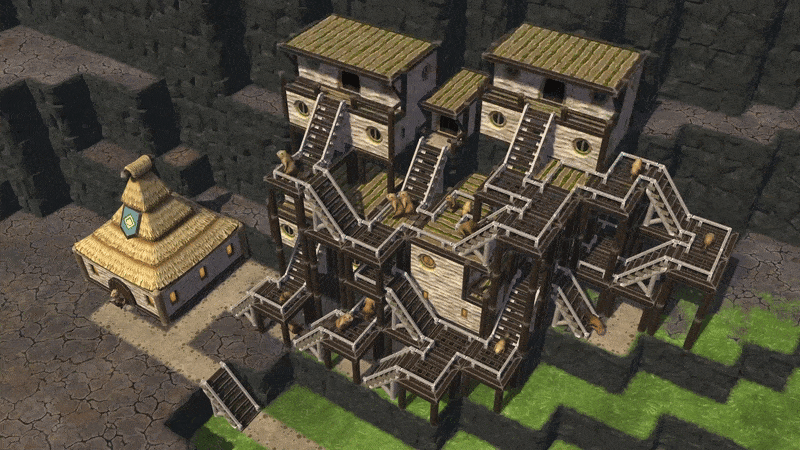
As you can see, districts are quite a chunky feature. They make running beaver colonies swimmingly fun – and dam, we can’t wait to see you go crazy with them in Early Access!
To make the wait easier, here's the final treat for today. Two talented members of our Discord community, Synthron and DerHouy, have written and recorded an awesome Timberborn song. We thought it deserved a proper BMV (beaver music video). Enjoy!
Time to announce the next big thing coming with the early access launch of Timberborn: the district system. Districts make growing your settlements easier to understand at the beginning and more fun later. They also improve the game’s performance. Oh, and they give your beavers a chance to swim. What is this sorcery, you ask? Keep on reading because there's a lot to unpack.
District Centers
With districts, the previous range system is going away. There are multiple reasons for that, but here’s a sample from Jon Biegalski, one of our game designers:The old system was quite simple but often left players confused. For example, if you wanted to build something with logs, the construction site needed to be in the range of both Builder's Hut and Log Pile. Also, some beavers would remain unemployed even though there were jobs available, as they lived too far away. These issues made the beavers less productive in the long run, and the districts fix that.
Add in some awkward situations where beavers starve with a full warehouse nearby or work in areas too far from their favourite carousel, and you get a picture. But that's in the past now!

In Early Access, you begin with a single, new building: District Center. It replaces the batch of starting buildings you know from the demo. All future buildings that have entrances need to be connected to a Center via paths – or just won’t work. That also means that you now need paths on roofs, dams, or platforms. Because of that, placing paths is now instant and no longer needs workers. Also, paths now work underwater. What?! Okay, okay, we’re getting there.

Under the new system, beavers diligently follow the paths you’ve built, moving between their homes, workplaces, attractions etc. but there are exceptions. Beavers who enjoy fieldwork such as cutting trees or working in ruins continue to do that within range of their workplaces. Builders construct buildings within the district. The district expands as you add paths.
Growing the colony
Each District Center has a limited range (measured in the length of outgoing paths). After you select a building, coloured lines appear, making it easy to identify. Lines turning red and disappearing are a sign that the area is too far from the Center. In other words, you’ve expanded far enough to consider setting up another district. If a building is not connected to a Center, the game will remind you about that.
To set up a new district, you put a (free) micro building called Gate anywhere on a path, effectively setting up a district’s border. Then, you put a new (also free) District Center somewhere behind that gate.

Your initial District Center comes prefilled with starting resources and all District Centers also employ a few builders. As there's no starting warehouse now, we’ve made adjustments to some other buildings such as Lumberjack Flag or Gatherer Flag that now have some storage capacity.
Beaver migrations and trading routes
Each additional district starts empty so it’s a good idea to send some of your beavers and goods there. Transferring colonists is easy. You select an origin District Center, pick a destination counterpart and choose how many adults and kits should be relocated – and off they go. You can rename your districts, just like you do with the beavers, so they’re easier to keep track of.A new district could also use some resources, and that's where trading routes come in. You establish them using two new types of buildings: Distribution Centers and Drop-off Points. Distribution Center in District A allows you to choose a Drop-off Point in District B and which goods (e.g. Carrots or Flour) to ship there. Beavers from the Center will then pick up the selected goods from a warehouse and start moving them. You can set per-district minimums and maximums to control import and export.

On that note, you can now switch between Global and District views. In the Global view, you see total numbers for your population, goods, wellbeing etc. The District view – opened via a list or by selecting a building – displays values for the district only. This allows you to create specialized districts, helps running large cities, and adds another layer to the game in the form of transporting goods.
Swimming
You keep reminding us that beavers can swim. We know, we even had swimming pools back in alpha! And now that the world alternates between wet and dry seasons, and you manipulate water levels with dams and floodgates, we're revisiting that. Sooner or later, some of your paths disappear underwater or you need a road in an area that hasn't dried up yet. You could use platforms but hey, beavers can swim!
In Early Access, when you place a path (on the ground or, as described above, on platforms, rooftops etc.) and it ends up underwater, it remains usable. In shallow waters, beavers are swimming on the surface. If the water is deeper, they dive. Flooding a building disables it and swimming is rather slow, so you will generally still want to build above water. But beavers are no longer afraid to get wet and they go about their day (carrying goods etc.) even when it involves swimming.
And YES, you can build underwater if you wish. There’s now even an additional toggle that makes the water transparent so you can see what your rodents are up to in the depths.

Performance and other improvements
Districts solve problems often expressed by the newcomers but there’s more to that. The old range system made running large colonies calculation-heavy, resulting in bad framerates, especially after increasing the in-game speed. Districts helped us solve a lot of issues on the performance front. Let’s hear from Kamil Dawidow, one of Timberborn’s programmers:With districts, obligatory paths and swimming, beavers have a much easier time navigating the settlement. They do not need to recalculate their routes all the time as water levels change or you put new buildings in their way. And since they now operate within districts and only follow paths (not all the terrain), less data is stored and processed. For example, a hungry beaver’s algorithm works faster when it simply needs to check if there’s food in the district’s warehouses or not – and then has less ground to cover, establishing an optimal, non-exhausting way there.
Finally, to help you use districts and the now-omnipresent paths, we’re adding a feature desired by all vertical architecture enthusiasts. You will be able to view your settlements layer by layer. This helps you create complicated multi-level megastructures, maintain hidden buildings, or check for missed unconnected paths. It works great paired with the water transparency toggle.

As you can see, districts are quite a chunky feature. They make running beaver colonies swimmingly fun – and dam, we can’t wait to see you go crazy with them in Early Access!
To make the wait easier, here's the final treat for today. Two talented members of our Discord community, Synthron and DerHouy, have written and recorded an awesome Timberborn song. We thought it deserved a proper BMV (beaver music video). Enjoy!





